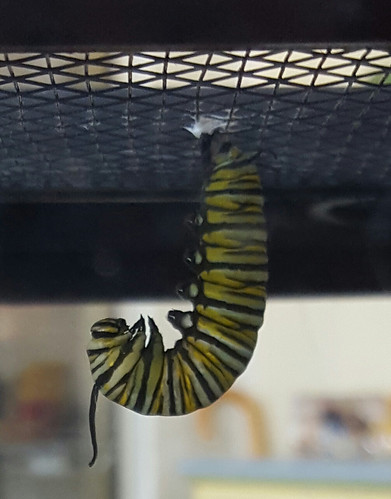
The pollinator garden at our library in Princeton, Ill. is a popular rest stop for monarch butterflies on their cross-continental journey. My agency, USDA’s Natural Resources Conservation Service (NRCS), worked with local partners and businesses to create a 2,400-square-foot pollinator garden as a way to educate the public and provide needed pollinator habitat.
We planted the garden designed by our landscape architect Vicki Morrical in 2014. It features 28 plant species and more than 700 plants. Signs help visitors identify the different plants.
But some special visitors that stopped by this summer didn’t need those signs. They knew where they were going! They were monarch butterflies migrating from Mexico. When the iconic black-and-orange butterflies arrived, the garden was alive with a variety of blooming flowers, including butterfly milkweed, wild bergamot, pale purple coneflower, rough blazing star and meadow blazing star.
Monarch butterflies rely on flowers with sugar-rich nectar for their food source. Meadow blazing star’s nectar makes it a magnet for monarchs. Another plant important to monarchs is milkweed, which is the only food monarch instars, or caterpillars, will eat.
We have 48 butterfly milkweed plants that provide habitat vital to butterflies. A butterfly lays eggs on the underside of the milkweed leaf, and the caterpillar hatches and eats its eggshell. It then eats the fine hairs of the leaf, and eventually it eats the leaf itself.

Monarch caterpillars go through five stages, molting as they grow with each stage. After it has eaten enough, it will find a place to hang upside down in a “J” shape. About 16 hours later it molts once more to reveal the chrysalis. Inside the chrysalis the caterpillar metamorphoses into a beautiful butterfly. It emerges in about 10 to 14 days.
This summer I carefully collected 12 caterpillars. I gave eight away to teachers and friends and raised four myself to personally experience the miracle of metamorphosis. It was truly a magical experience!
Monarch populations have decreased significantly over the past two decades in part because of the decrease in their habitat. Our pollinator garden here in Princeton helps us do our part for the monarchs.
Our garden attracts much attention and has been the setting for many outdoor classroom events. It’s a thrill to see so many people enjoying the garden. We are grateful for the volunteers who helped us establish it and to everyone who helps us maintain it. We also thank our partners and local businesses, including Bureau County Pheasants Forever Chapter, The Xerces Society for Invertebrate Conservation, Prairie Nursery & Landscaping, and Hornbaker’s Gardens.
Our pollinator garden is part of The People’s Garden Initiative, USDA’s collaborative community garden initiative that brings more than 1,300 local and national organizations together to establish community and school gardens across the country.
In its second year our garden has exploded into color and has become a living example of, “if you build it, they will come.” We’re already looking forward to next summer–when the monarchs return from Mexico.




